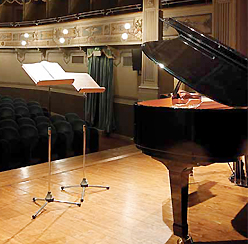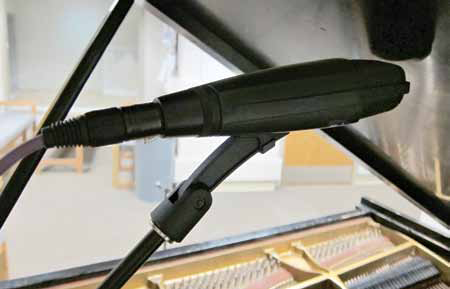
It Takes Three
I used (and use) the high hole mic as the basis for all piano micing.
But with major artists and bigger budgets I use a 441 on a tape bridge aimed away from the hammers out of phase for LF, and drop another 414 on some foam in the middle of the brass plate aimed at the hammers.
Unless someone has a weird situation, that three mic look covers most bases. (I once had a three mic look on a Bosendorfer wired for Brubeck with the London Symphony, with the lid on high stick. His people walked in and removed the lid. As the piano was surrounded by an 80 piece orchestra on risers, the mic count went north fast or I wouldn’t have gotten him over the ensemble.)
This three mic thing was presented to John Lewis of the Modern Jazz Quartet, with, I will admit, some smugness on my part, as it had been working well in most situations that needed more detail than the single mic high hole look. Lewis looked at the mics and gave me this weird sly smile. “Would you like to try something different?” he asked.
Not really, methinks, but I went ahead and followed his instructions, which I will replay for you now: Get a tripod base boomstand, and position a Sennheiser 421 on it.
Make sure the rolloff is on “M,” and with the lid on high stick, get the mic 1/8th away from the lid parallel to the ground aimed at a point three-quarters of the way up the lid as seen from the bass side of the piano. (Or about 1.5 feet down from the top of the lid, depending on the size of the piano. ) Don’t let the cable, mic, or micstand touch the piano, and that’s it.

I got the thing up on headphones in the house and could not believe the outcome – wonderful flat piano sound with no bumps or non-linearities – fabulous. No wonder he gave me that smile. I never queried Lewis as to the provenance of that trick, though I worked with him on a number of other occasions.
As MJQ had done it all, including a stint as the house band on the Today show in the 1950s, they could have gotten that move from almost anywhere – TV guys, studio guys, concert sound guys – who knows.
If you want darkish sounding flat piano sound, look no further. Useless for monitors, and not a great idea if the drummer is too close, this is my default for what we will call low key good taste piano situations. Remember: the lid must be on high stick for this to work. And no, I never tried this with any other mic. Give it a listen and you will see why.
